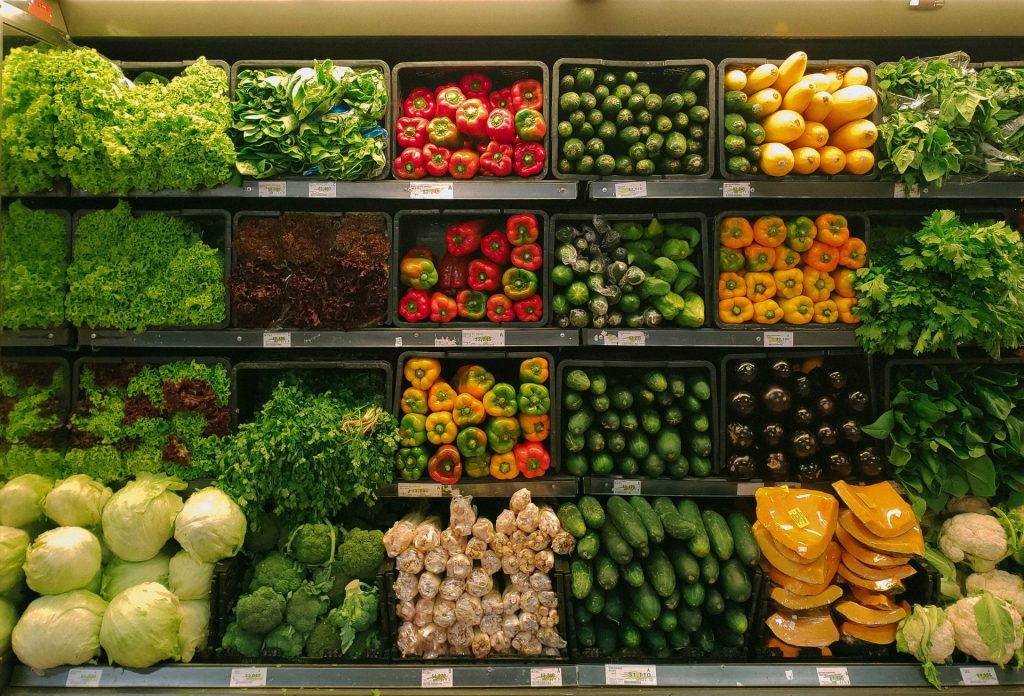
Remember December of 2019? Grocery shopping was a simple, humdrum holiday chore. You jumped in the car, ran into a crowded market and sometimes literally bumped into friends among the produce—with hugs all around. We grumbled about the cost of seasonal items.
All of that seems like it was so long ago.
In March, putting dinner (and lunch and breakfast and dinner again) on the table became a complicated, anxiety-producing challenge. We were confronted by a new sight: Shelves at our local supermarket emptied of familiar items like spaghetti, rice, frozen vegetables and paper towels. Prices rose significantly and purchase limits were put in place.
Six months later and we’ve all adjusted … sort of. But as we look toward to the fall and the big food holidays from Thanksgiving to New Year’s, we all wonder: Will it happen all over again? It’s 2020, so nobody is guaranteeing anything, but the same scenario is unlikely to play out again according to local and national grocery store experts. However, that doesn’t mean things will be anything like “normal” in the local aisles.
TONY’S MEATS AND MARKET: THE HYPERLOCAL EXPERIENCE
“We had the panic buying in March, but things settled down. Luckily, we had good suppliers,” says CEO and president Daniel Rosacci. Smaller meat packing plants in Colorado and across the Midwest picked up the slack for the favorite area store when larger plants were hit by outbreaks. Beef, pork and chicken production levels are now back to near-normal, but Rosacci doesn’t expect the low prices of recent years to return anytime soon.
He says that the company has steadily stockpiled more staples like pasta as well, which disappeared for a while in March. And to stay up to date on what future items Tony’s markets might need, Rosacci regularly confers with a group of 13 other similarly sized grocers around the country. “We all have the same challenges. We’ve all shut down salad bars and hot bars, and there’s no more sampling,” he says. “Everybody wants to know what’s going to happen in the fall.”
He continues: “I’m proud that we have had zero cases among our employees. The hardest part of the pandemic so far has been dealing with the strong emotions of our customers. We almost had customers getting into a fist fight over masks before the statewide mandate. It’s not all that hard to wear a mask, but it has become a political thing. Listen, I’m a butcher with a family business. I’m not a police officer.”
NATURAL GROCERS: FLEXIBILITY IS KEY
Laura Perkins, vice president of purchasing for Lakewood-based Natural Grocers, agrees that the extreme “pantry loading” of the spring isn’t likely to be repeated. The chain has more than 100 stores, including markets in Centennial. “From the start we concentrated on making our customers and crew feel safe. Initially, we had trouble keeping up with the volume, but we have pretty much recovered supply-wise,” she says. “For instance, we are waiting on the tomato harvest to build up our stockpile of spaghetti sauce.”
Some of that volume challenge has been from having more shoppers who are regularly cooking at home. “I find that very encouraging,” Perkins says. “People have really been branching out and trying new sauces, spices, condiments and dips.”
Moving forward, Perkins says shopper flexibility is key: “I don’t foresee any major shortages this fall, but there may still be an uptick in purchases as shoppers see a long missing ingredient back on the shelves. They think, ‘I didn’t get it last time and it ran out, so I better grab it.’”
NATIONALLY: FEWER, LARGER TRIPS TO ‘SAFE’ MARKETS
According to a July report from the Food Marketing Institute, shoppers (that’s us!) are changing: Americans are making fewer, faster and larger food trips at fewer stores, with more online ordering and delivery. Trends suggest this will continue through at least the first half of 2021.
Where we choose to shop has also been impacted. A recent Facebook study and survey revealed that 71 percent of Americans say that safety—not pricing or selection—is their priority when deciding where to do in-store shopping. We are, too, still uncertain about food supplies. A July national marketing survey by Acosta indicates that about half of U.S. shoppers still worry about finding the products they want and plan to stock up again if another pandemic shutdown looms.
While there probably won’t be another toilet paper panic, spot shortages do seem likely. USA Today reported in August on a shortage of Dr Pepper and other soft drinks—at least in cans—because we are drinking at home, not in restaurants. Bloomberg also noted rising pepperoni prices across the nation with some spot pizzeria shortages.
THE GOOD NEWS: FAVORITE HOLIDAY FOODS SHOULD GENERALLY BE AVAILABLE
Just don’t get picky about labels. “Folks are going to see all the usual supplies on the shelves for the holidays, but probably less variety. The specific mix they’ve always used may not be available because we just can’t get it,” Perkins says.
Rosacci agrees. “You may not have every shape of pasta,” he says. “There may be different cuts of beef. Items may not be the exact things shoppers are expecting.”
But: “Our meat supplies are fully recovered and we’ve got our fresh turkeys coming for the holidays,” Perkins continues. “Those are still by pre-order.” She also expects early shopping by customers seeking to avoid crowds and long lines in November and December.
Rosacci says that most grocers expect holiday food shopping to start earlier this year: “By October, we’ll put out the pumpkin and cranberries and more baking supplies. I think they will buy earlier out of fear of supplies running out, but I don’t think there will actually be shortages. … My message to shoppers is that there is no reason to be anxious. There will be plenty of food out there.”


